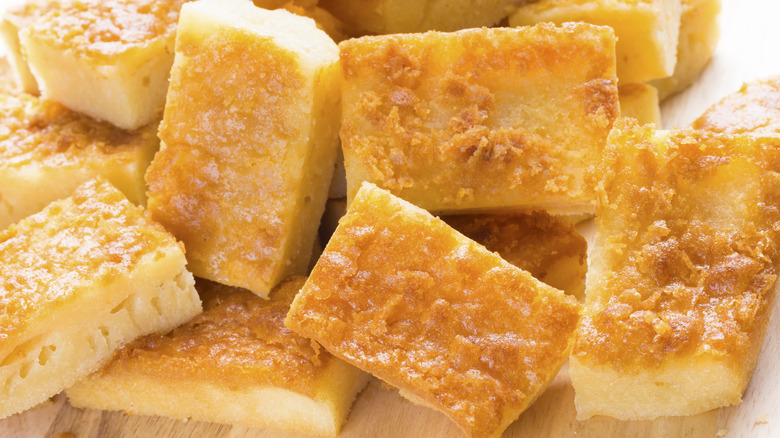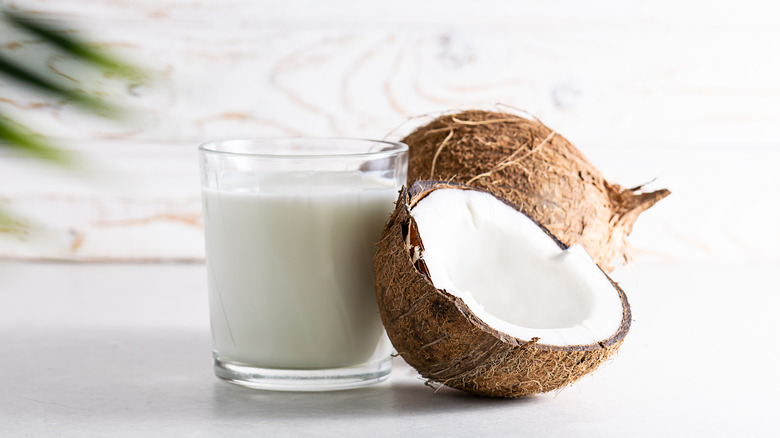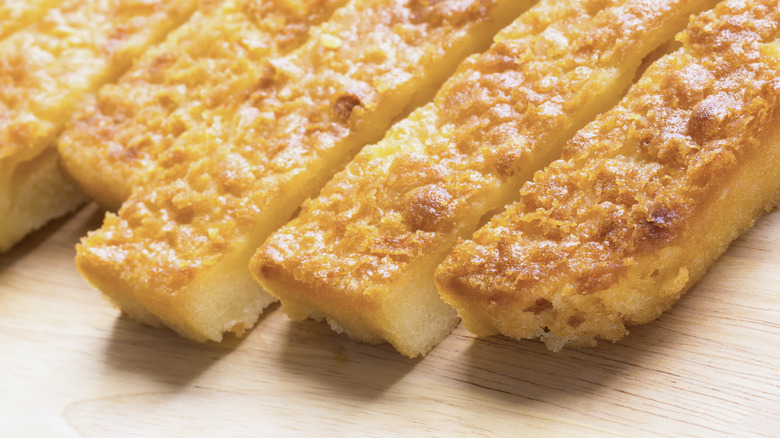Hawaii's Butter Mochi Is The Sweet, Chewy Treat You've Been After
Few food cultures in the United States can claim to have as many influences as Hawaii's — where its cuisine today represents a coming together of the different settlers and immigrants who made the state their home, and where non-native ingredients have become part of the islands' food landscape, per Explore Parts Unkown. Because of this, it should come as no surprise that one of the island's most popular desserts shares the same name as a Japanese sweet and the textures and flavors of the Filipino rice cake, bibingka, as The New York Times notes. While the snacks aren't identical, one can be mistaken for another. So much so that Tiffany Montiel tells the New York Times, "I always thought that butter mochi was the English term for bibingka."
But while the back stories of Hawaii's more popular dishes and snacks, including its plate lunches and crack seeds, may not be too difficult to track and trace, the same cannot be said of butter mochi, whose origin story — if it has one — has yet to make its way to the broader public domain. But we know that butter mochi can also be found in Southern Japan's Akita prefecture, where No Recipes says it shares "similarities" with its cousin across the Pacific Ocean.
Butter mochi's standout ingredients
Butter mochi is cut and served the way your favorite bar cookie might be — and while it may look like a blondie, its texture is as different as it gets. Like other types of mochi, butter mochi is made with sweet or glutinous rice flour known as mochiko, per The New York Times, which can be found in Asian groceries or in the Asian section of your supermarket.
Runaway Rice points out a big difference between regular rice flour and glutinous rice flour due to the type of rice used to mill the flour. While rice flour is used to make noodles, and can be used as a wheat flour substitute, the same cannot be said of glutinous rice flour, which becomes sticky when it heats up, so it is generally used to make dumplings and gravies.
Another ingredient that makes Hawaiian butter mochi's flavor pop is coconut milk which is used in place of regular cow's milk. But because generous amounts of butter are used to make the dessert, it would be a stretch to say it would be good for vegans to enjoy. The Japanese version of butter mochi uses milk, but it is cooked differently, per No Recipes.
How butter mochi is made
Hawaiian butter mochi is easy to pull together. Like any bar cookie, the ingredients are whisked together until smooth, and then baked for anywhere from 75 to 90 minutes until the top is "golden brown and crackly," per The New York Times. While the New York Times also suggests adding a glaze, Onolicious Hawaii suggests butter mochi can be made in different ways, and with different flavors including chocolate — which makes for a brownie dupe, and even ube, per The Kitchn.
And while they may share the same name, No Recipes says Akita Prefecture's butter mochi is as different from Hawaii's butter mochi as it gets. Japan's version of the dessert doesn't have the characteristics of a cake; instead, it is more like the traditional Japanese sweets known as a "wagashi", which are enjoyed with green tea, per Japan Guide. While the dessert is traditionally steamed on a stovetop, No Recipes has a shortcut: first, mix the batter properly to ensure there are no lumps before microwaving several times and then pouring into a mold tray. Leave it to cool in the refrigerator, dust it with potato starch, cut and serve.


